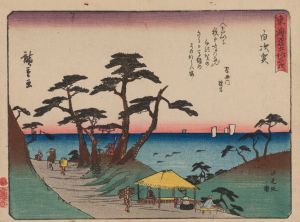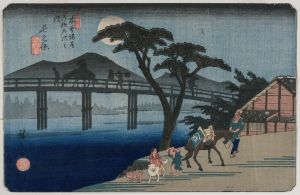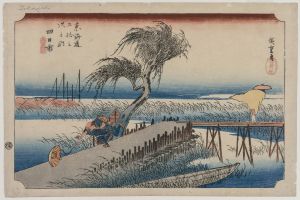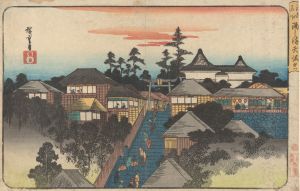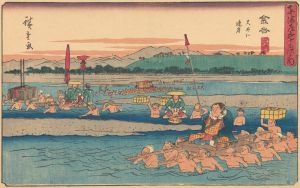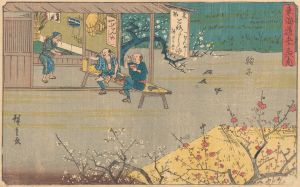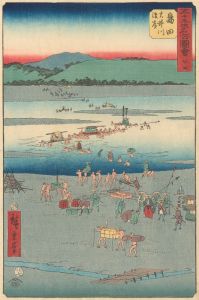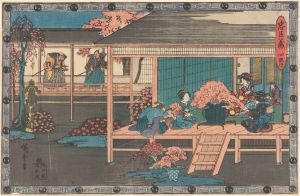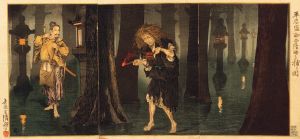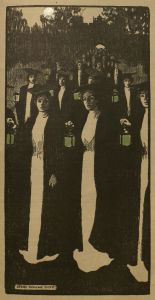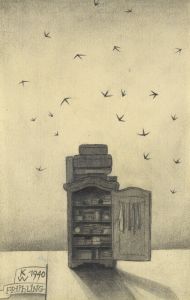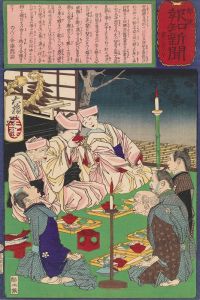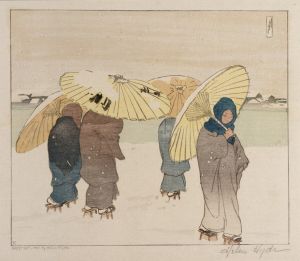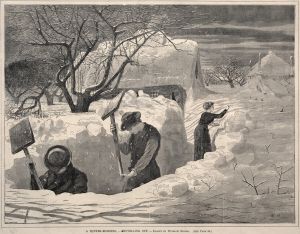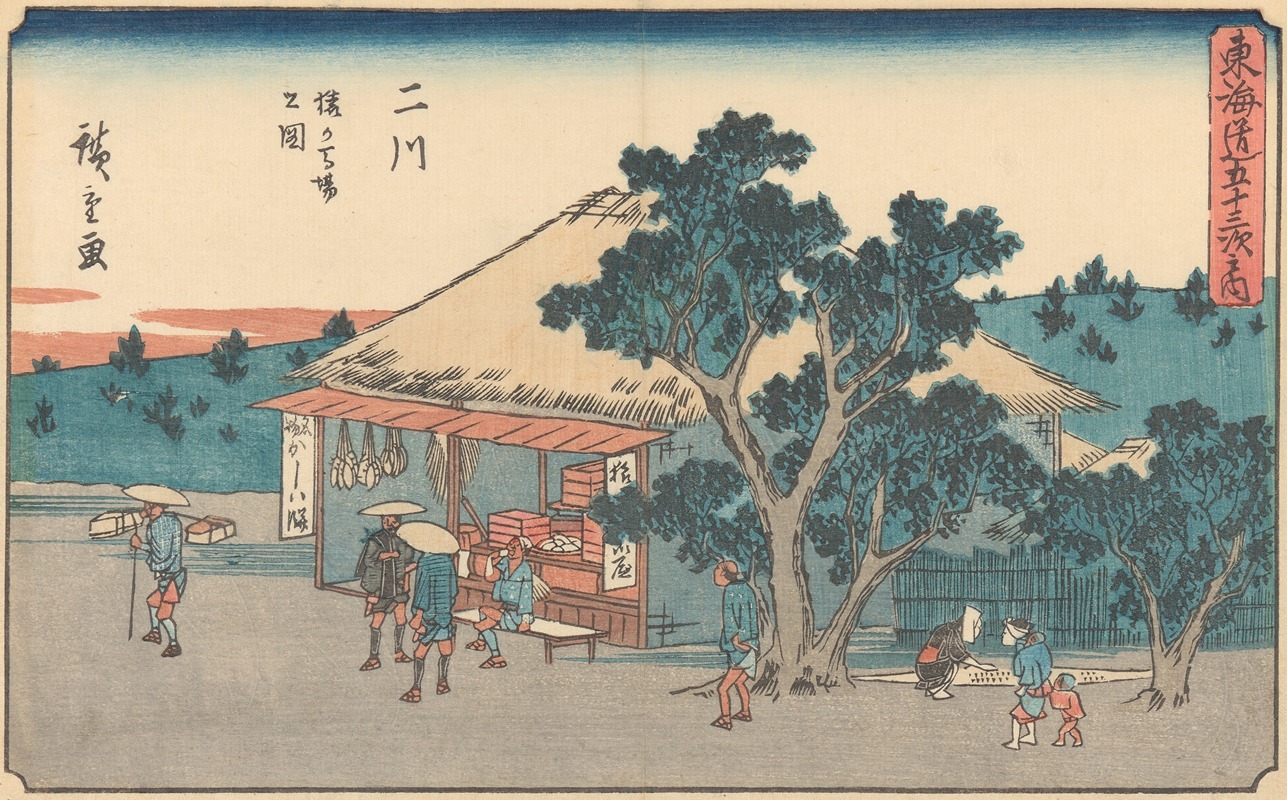
Futagawa
A hand-painted replica of Andō Hiroshige’s masterpiece Futagawa, meticulously crafted by professional artists to capture the true essence of the original. Each piece is created with museum-quality canvas and rare mineral pigments, carefully painted by experienced artists with delicate brushstrokes and rich, layered colors to perfectly recreate the texture of the original artwork. Unlike machine-printed reproductions, this hand-painted version brings the painting to life, infused with the artist’s emotions and skill in every stroke. Whether for personal collection or home decoration, it instantly elevates the artistic atmosphere of any space.
Andō Hiroshige, a renowned Japanese ukiyo-e artist of the Edo period, is celebrated for his landscape prints and depictions of everyday life. Among his most famous works is the series "The Fifty-three Stations of the Tōkaidō," which illustrates the various post stations along the Tōkaidō road, a vital route connecting Edo (modern-day Tokyo) to Kyoto. One of the prints in this series is "Futagawa," which captures the essence of the journey and the landscape of the time.
The Tōkaidō road was one of the five routes of the Edo period, established by the Tokugawa shogunate to facilitate travel and communication between the capital and other regions. The road featured fifty-three post stations, where travelers could rest and resupply. Hiroshige's series, created after his own journey along the Tōkaidō in the early 1830s, provides a vivid portrayal of these stations and the diverse scenery encountered along the way.
"Futagawa" is the thirty-third print in the series and depicts the Futagawa-juku, the thirty-third station on the Tōkaidō. This station was located in what is now Toyohashi City in Aichi Prefecture. Hiroshige's depiction of Futagawa is characteristic of his style, combining precise observation with artistic interpretation to convey the atmosphere of the location.
In the "Futagawa" print, Hiroshige captures a scene of travelers on the road, set against a backdrop of rolling hills and distant mountains. The composition often includes elements such as travelers on foot or horseback, local inhabitants, and the natural environment, all rendered with Hiroshige's keen attention to detail and use of color. The print reflects the daily life and movement along the Tōkaidō, offering insight into the cultural and social aspects of the Edo period.
Hiroshige's use of perspective and color in "Futagawa" is notable. He employs a technique known as bokashi, a method of color gradation, to create depth and atmosphere in the sky and landscape. This technique, along with his use of line and form, contributes to the dynamic yet harmonious composition that characterizes much of his work.
The "Fifty-three Stations of the Tōkaidō" series, including "Futagawa," was highly popular in Hiroshige's time and remains influential today. It not only showcases Hiroshige's artistic skill but also serves as a historical document, providing a glimpse into the travel and geography of Edo-period Japan. The series has inspired numerous artists and continues to be studied for its artistic and cultural significance.
Hiroshige's work, including "Futagawa," is part of the broader ukiyo-e tradition, which flourished from the 17th to the 19th century. Ukiyo-e, meaning "pictures of the floating world," encompasses a wide range of subjects, from landscapes and cityscapes to portraits of kabuki actors and courtesans. Hiroshige's landscapes, however, stand out for their lyrical beauty and innovative compositions, which have left a lasting impact on both Japanese and Western art.
In summary, "Futagawa" by Andō Hiroshige is a significant work within the "Fifty-three Stations of the Tōkaidō" series, capturing the essence of travel and the landscape of Edo-period Japan. Through his masterful use of color, perspective, and composition, Hiroshige offers a window into the past, preserving the spirit of a bygone era for future generations to appreciate.





